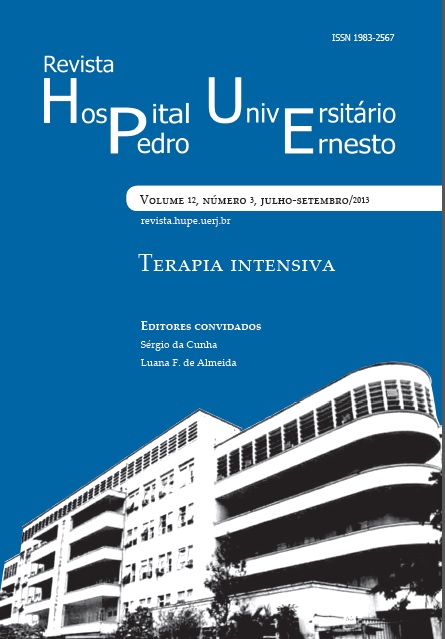Scales of pain in the critically ill patient: an integrative review
DOI:
https://doi.org/10.12957/rhupe.2013.7538Abstract
The pain must have great importance for nursing in hospital settings because it is considered the fifth vital sign. Customers express grief in different ways and there are scales that assess to conduct appropriate therapy. Critically ill patients are noteworthy because, due to the clinical environment to wich it is submitted, may struggle to express pain physically. Most of these customers experience pain, fear and anxiety, and this can slow down, for example, recovery and liberation from mechanical ventilation. Thus, pain relief proves essential to aid a better prognosis. The study objectives are: to review the literature in the period from 2008 to 2012, productions of existing science on pain scales and discuss the use of pain scales found in the literature review from 2008 to 2012 in patients intensive care. This study is an integrative literature review, with two search databases online, in November 2012, following the criteria: to be in Portuguese, to fit between 2008 and 2012, to have compatibility with the theme and to be in full available for free. We excluded those productions that did not obey these criteria and that appeared repeatedly. The selection resulted in twelve scientific publications. There were found and discussed five types of scales: Visual/Verbal Numerical, Visual Analogue, Faces of Pain, Pain and Behavioral McGill Pain Questionnaire. Therefore, the nursing staff must know and understand the scales available to know how to choose the best to suit your type of patient.Downloads
Published
2013-09-30
Issue
Section
Artigos


